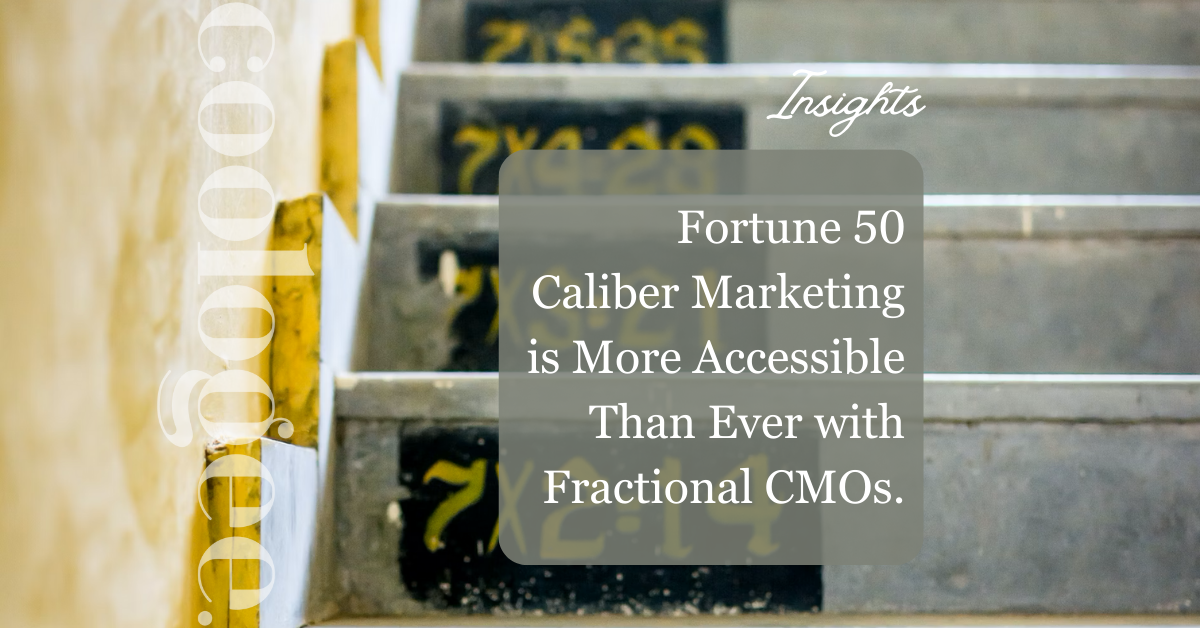Big Data is a Must, but it Only Gets You Halfway There. PART 1.
I love data. At least now I do. It wasn’t always this way – I had been afraid of data, or rather my assumed inability to use data (read this post to learn about my turning point). Fear of numbers is common, especially among women who grew up in a time before STEM and the systemic push to encourage women to pursue math and science. Yet numbers tell a story. About your audience. About your brand. About your marketing effectiveness. There is quiet comfort in proper measurement and reporting. When someone asks you ‘Is it working?’ you can sidestep the subjective and personal opinions and use numbers to say yay or nay. More crucially, numbers can tell you in what way it is or is not working.
Clients ask us to help them use their data to improve marketing campaign performance. Of course, we say yes, jumping for joy at the data-spelunking adventure that awaits us. Often, their data is stuck, missing, or constipated. Data is captured in silos and the silos are not set up to pass data along to each other. Data governance is lacking making it difficult to trust the data. Data feeds are set up, but the data is not passing through correctly. Our first task is addressing basic data management issues that prevent us from using the data to improve marketing.
Yes, data is important. Very important. But data will only get you halfway to success. Human insight and brand affinity get you to the finish line. Let’s talk about data first, then the role a brand plays in effective acquisition marketing. I am going to use the insurance category again because it is one of the most difficult categories to conquer and the relationship between marketing segmentation and product segmentation is so close, as if marketing and product are two sides of the same coin. However, the fundamentals of this insight dispatch remain true across categories so noninsurance people, please read on.
I am also breaking this into two parts – the first tackling data and the second tackling brand – because it was too long to keep your attention. I hope you will read this and continue to part two!
Data is very important. Data conversations often blend with artificial intelligence (AI) discussions. Naturally, people jump to AI because they want to do something with their data and AI is a way to use data to improve marketing. I already talked about the need to ensure the data is captured, categorized, cleaned, and governed correctly, so let’s assume we are starting at a point where the data is ready. What next?
There are an infinite number of applications for data. To keep this short, I will focus on the three key areas that are the most important: audience segmentation and targeting, total funnel optimization, and campaign optimization. This gets complicated, so I will break each major topic down into its parts and pieces. Just keep in mind this is an insights article and must remain top-level. I am more than happy to have deeper conversations with you if you want.
1. Audience Segmentation & Targeting
Cookies and UTM parameters combined with Google Analytics and native platform measurement result in an abundance of data. So much data that it can feel overwhelming. By focusing on audience identification, modeling, and efficiency, most marketing managers can significantly improve performance in six months.
Audience Identification. Start by asking if you have data on the audience you want to acquire. It's common to encounter brands that have a ton of audience data, but the audience they know about is not the one they want as customers. This is particularly true in insurance. Progressive’s pricing strategy is to have a rate for every segment. A great strategy for a company that wants to be the number one carrier in the US. Even Progressive would tell you there is a difference between being able to profitably underwrite risk and earning a return on marketing dollars. Acquiring new customers is expensive; carriers don’t recoup the marketing costs until a couple of years into the relationship.
To achieve positive marketing ROI, carriers must target audience segments that are more likely to stay. Keeping a customer in insurance requires audiences with a good credit score (they need to be able to pay their premium every month, six months, or year), broad product needs (more than just auto because bundled customers stay longer), and a preference for the brand (I found people who believe a brand is ‘for people like’ me have an 11x higher likelihood to consider that brand). A targeting strategy that incorporates big data audience segmentation must incorporate credit, need, and propensity.
Modeling. Fit and propensity modeling is just the beginning. Look-alike modeling is the most effective data-first targeting strategy. The question I always ask is: are the people you have data on today the same people you want as customers tomorrow? Clients engage us when something is not working, so the answer to this question is usually ‘no.’ Look-alike modeling will not work out of the gate, but all is not lost.
In high school I was an art nerd, spending my free hours in the art room exercising my demons on canvases and clay. My favorite art teacher would always ask us to look at both the positive and negative spaces (she was also from Scandinavia and would pronounce zippers with an ‘s’ so it sounded like ‘sippers’). Looking at the positive and negative is immensely useful in my work as a marketing strategist. When you have a lot of data about a customer group you DO NOT want, you can apply suppression strategies. While not as effective as look-alike modeling, suppression is a stepping stone to better audience modeling.
Efficiency. Data allows us to dig into the secondary and tertiary levels of cause and effect, often allowing us to see a trend before it hits the top-level reporting. A simple example: your digital media campaigns are driving a boatload of traffic to your site at a very low cost per visit. This may be a reason to celebrate, but maybe not. Are your site visitors the right people? Are they doing what you need them to do so you can nurture them down the funnel? Working with a plastic surgeon recently, we saw a high volume at a low cost. People were even taking the next desired action – filling out a form requesting a consultation. Yet when the office called the leads, many did not answer their phones and a few who did answer did not remember filling out the form in the first place (we turned the campaign off between the hours of 1 AM and 5 AM – this is a time when people do the silliest things without real intention – and fun fact, short-term memories need twenty minutes to shift to long-term memory so if a person falls asleep less than twenty minutes after taking an action, they will not remember it the next morning). By marrying campaign data with business data, we can create a feedback loop that enables audience optimization and improved efficiency.
2. Total Funnel OptimizationMarketing acquisition is like plumbing. Water may run smoothly from the main line yet reduce to a trickle at the shower head. Blockages, leaks, and fluid engineering issues are the common culprits. The same happens in marketing. Unlike plumbing, though, marketers need to engage a cross-function team to improve marketing campaign performance; marketers must work with technologists, data scientists, UX specialists, and product teams to ensure the lead pressure is optimal and flowing. After connecting marketing data to business data, marketers must take the next step and look at the waterfall analytics to identify issues.
Measurement and tagging must allow for total funnel analytics, too. UTM parameters must include source, audience, creative, media, and offer data. Google reports must be able to connect the dots between site visits and the next action taken. Consumer marketing databases must capture marketing signals and append data to profiles. Connecting the dots can take years, but it is well worth the effort. One of these days Google is going to follow through on its threat to remove access to its data. When this happens, companies must have first-party data to continue acquiring customers at an allowable cost (Google’s search data is one of the most powerful shopping triggers out there – without its data, most programmatic platforms will struggle to deliver the same performance).
3. Campaign Optimization
Creating UTM parameters that allow for creative effectiveness analysis is a requirement. If your campaign reports are not able to report down to the creative type, you are missing data that will enable better optimization. Creative reporting is not enough, though, as marketers must be aware of media, web, and business data to make an informed decision about creative optimization. Here’s why.
Say you have an audience segment the business teams have identified as a high-quality prospect group. The product team has worked on the design of its widget to meet that segment’s needs. They have identified the persuasion-based reasons to believe and want marketing to use these value propositions in the campaign. Great. This is a good start.
Marketing takes the audience definition and value propositions and develops an integrated marketing strategy, complete with branded creative, media plan, offers, and measurement strategy. The product team is happy. The CEO is happy. Marketing is happy. The campaign goes live.
Two months later, marketing brings a campaign report to a business review and declares the campaign a success. But the product team is not happy. Sure, they have had a lot of interest and inquiries, but sales are rotten. CEO is frustrated and kills the initiative – she does not have the risk appetite to continue. Everyone is sad.
This scenario is more common than you think. What went wrong? The product team saw its marketing department as ‘cake decorators,’ the team that makes their product look good, and not as business partners. This bias meant the product team was not sharing its data with marketing. Marketing was withholding data, too. Sick and tired of being treated like the little kids at the adult table, they did not share all the marketing data with the product team. Now each has their unlinked performance report cards and the joint initiative is a failure.
Campaign optimization goes way beyond marketing KPIs. Marketing and product teams must work together to achieve success. With a free exchange of information across groups, both marketing and product can make better decisions. Marketing may have identified a more qualified target segment, but the value proposition or offer is not right. The product team may have a new adjacent product opportunity but has not told marketing about the future product iteration and marketing has not set the beta product up to be successful on relaunch.
Data is important. Successful organizations must use data to inform decision-making. Yet most organizations are withholding data from their business peers. Maybe they have good intentions; often they do not (many business managers want to keep to themselves the power that comes from that knowledge). For data-driven strategies to work, data must be universally shared allowing insights and optimizations to come from any department.
One of the most critical insights is brand readiness. Part two will address the other half of effective acquisition – is your brand ready to deliver positive acquisition marketing results?

 By
By


